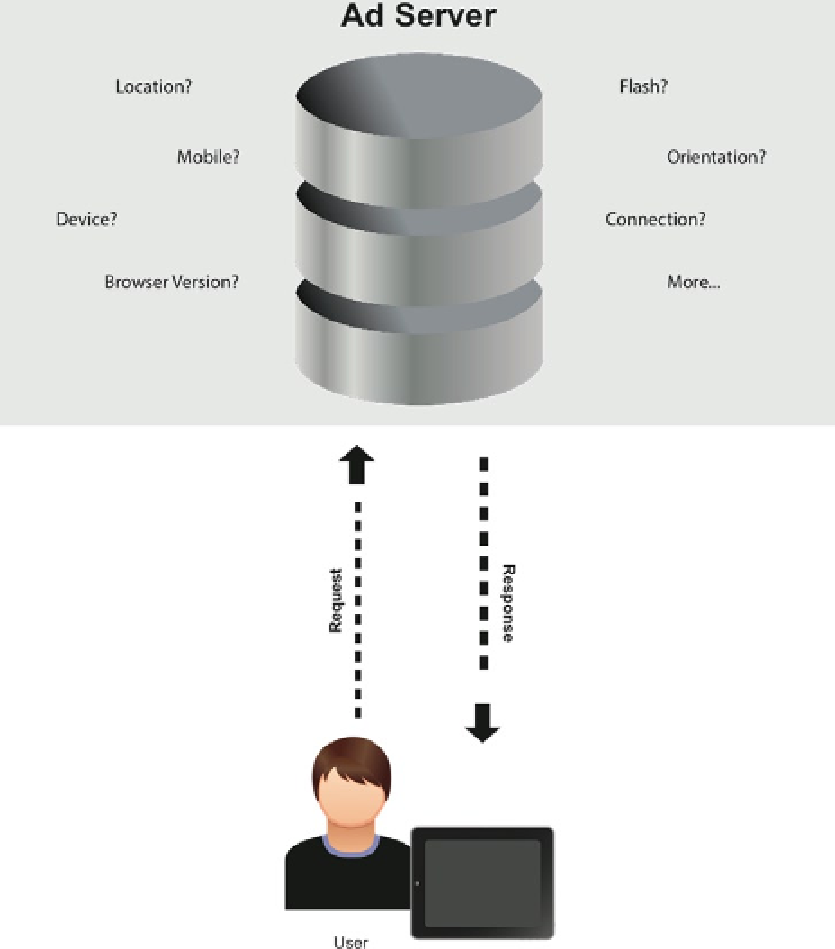HTML and CSS Reference
In-Depth Information
Figure 11-1.
The typical ad server request-response with dynamic input/output values
Delivery rules have a lot of power in that they are the first line of entry for the ad server; ad-serving companies
attempt to make this ad response super quick in order to serve an impression for every person viewing the content.
They typically judge this response time in a matter of milliseconds. Ad servers don't just use browser-sniffing
techniques; they can sniff out user cookies or data stored on the client side in the browser cache, as well as IP
addresses, ISPs, and various other data I'll cover later. Delivery rules or settings often apply to how the ad gets served
to the publisher page through the ad tag of the requesting user. Delivery rules can often have frequency, rotation, and
user-has rules and specific creative types associated with them. These rules can also be paired with other variables
such as time of day, location, and any other variables that the ad server can analyze. I'll cover each one of these
techniques in the following sections.
Frequency
is the number of times the user will see the ad. If the campaign lasts one day and the user frequents
the publisher page multiple times a day, that user could “frequency capped” after the initial view and served a
different creative thereafter.
Rotation
simply means how many different creatives a user can potentially see within

